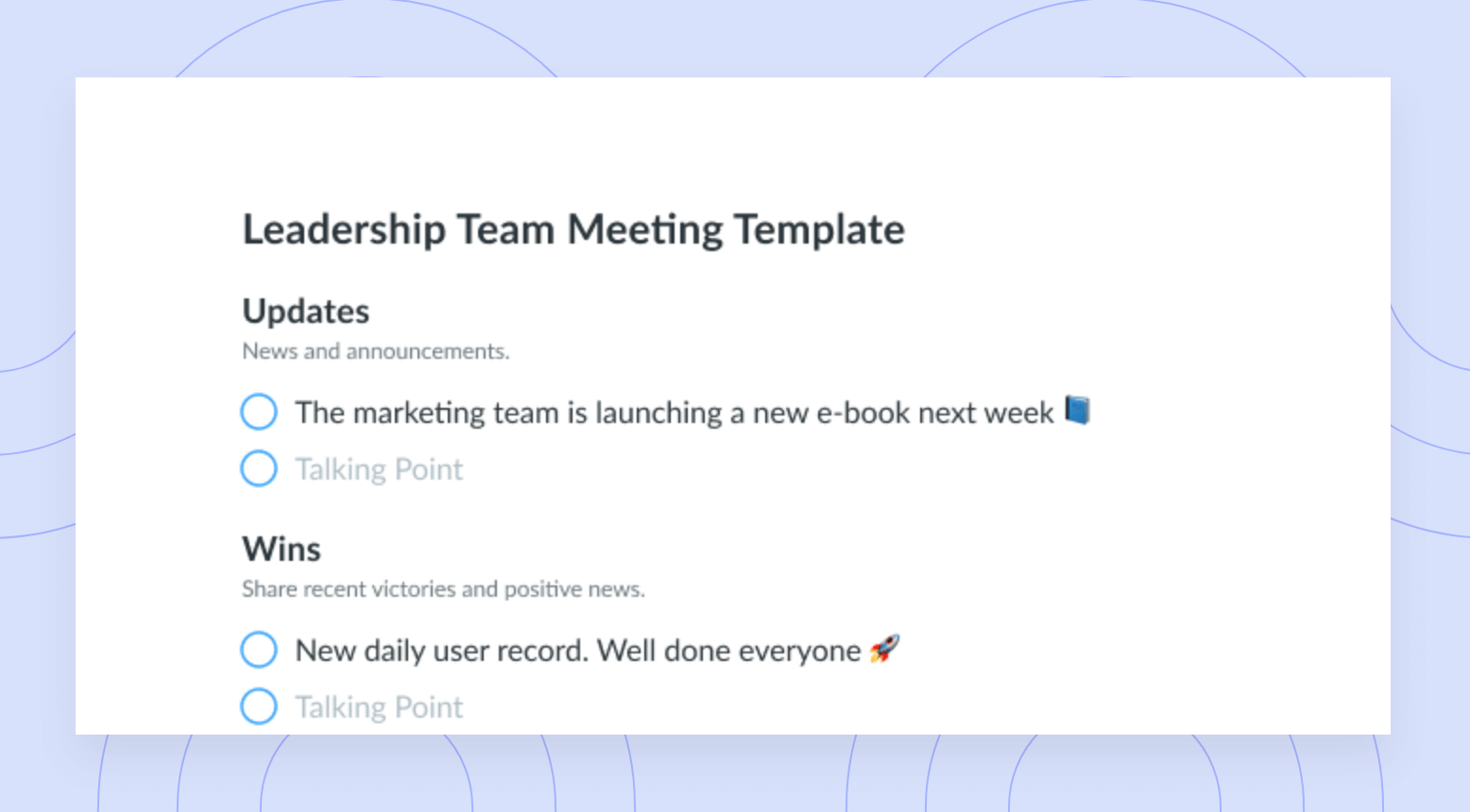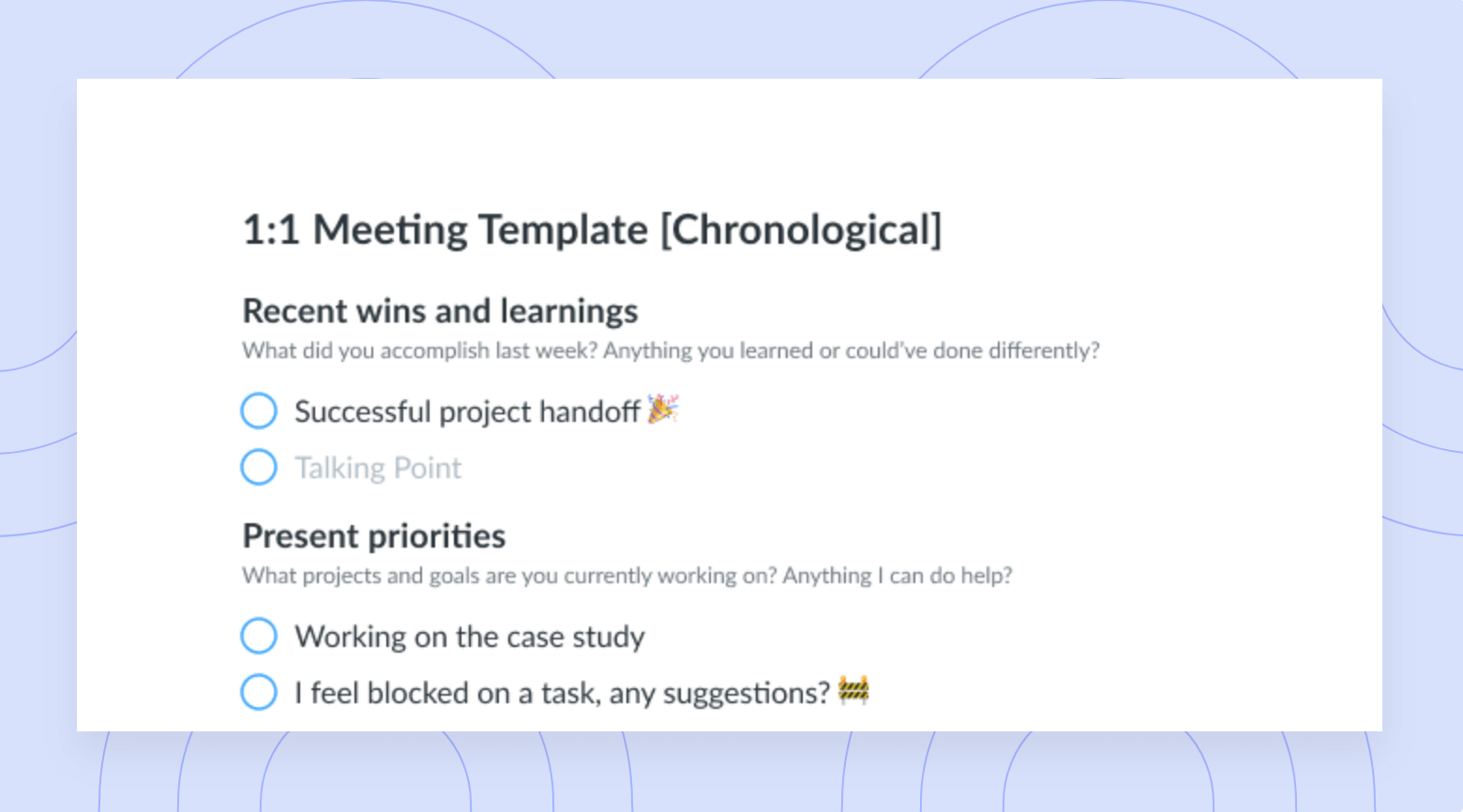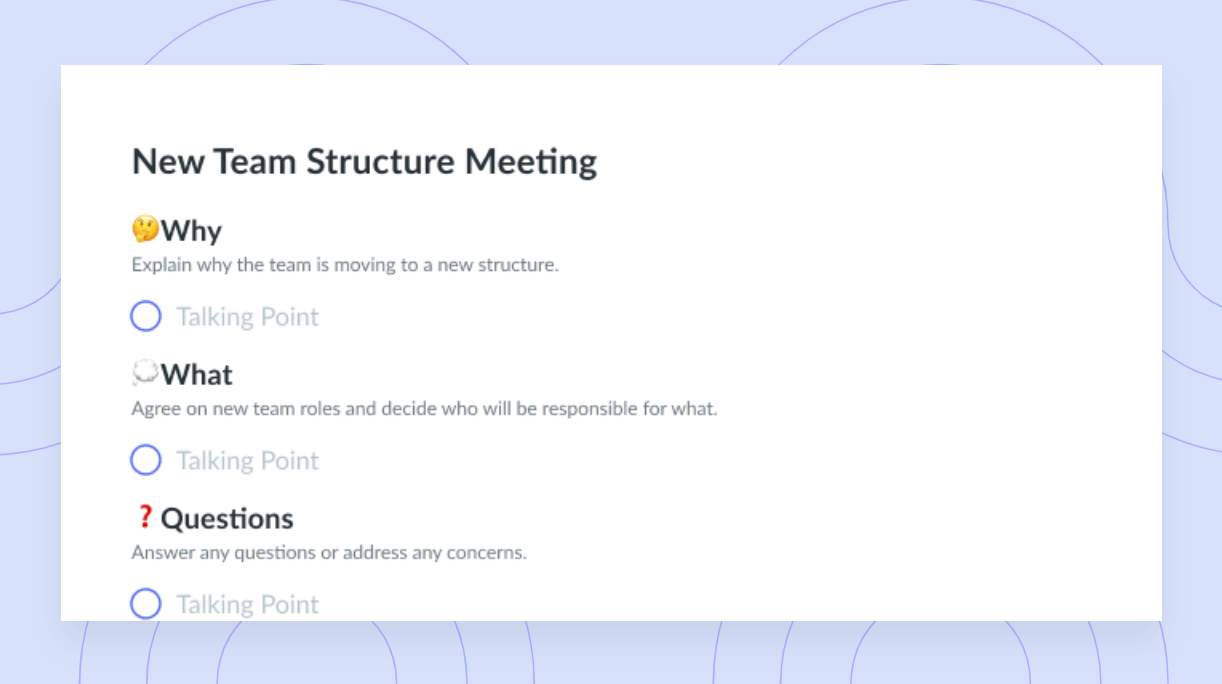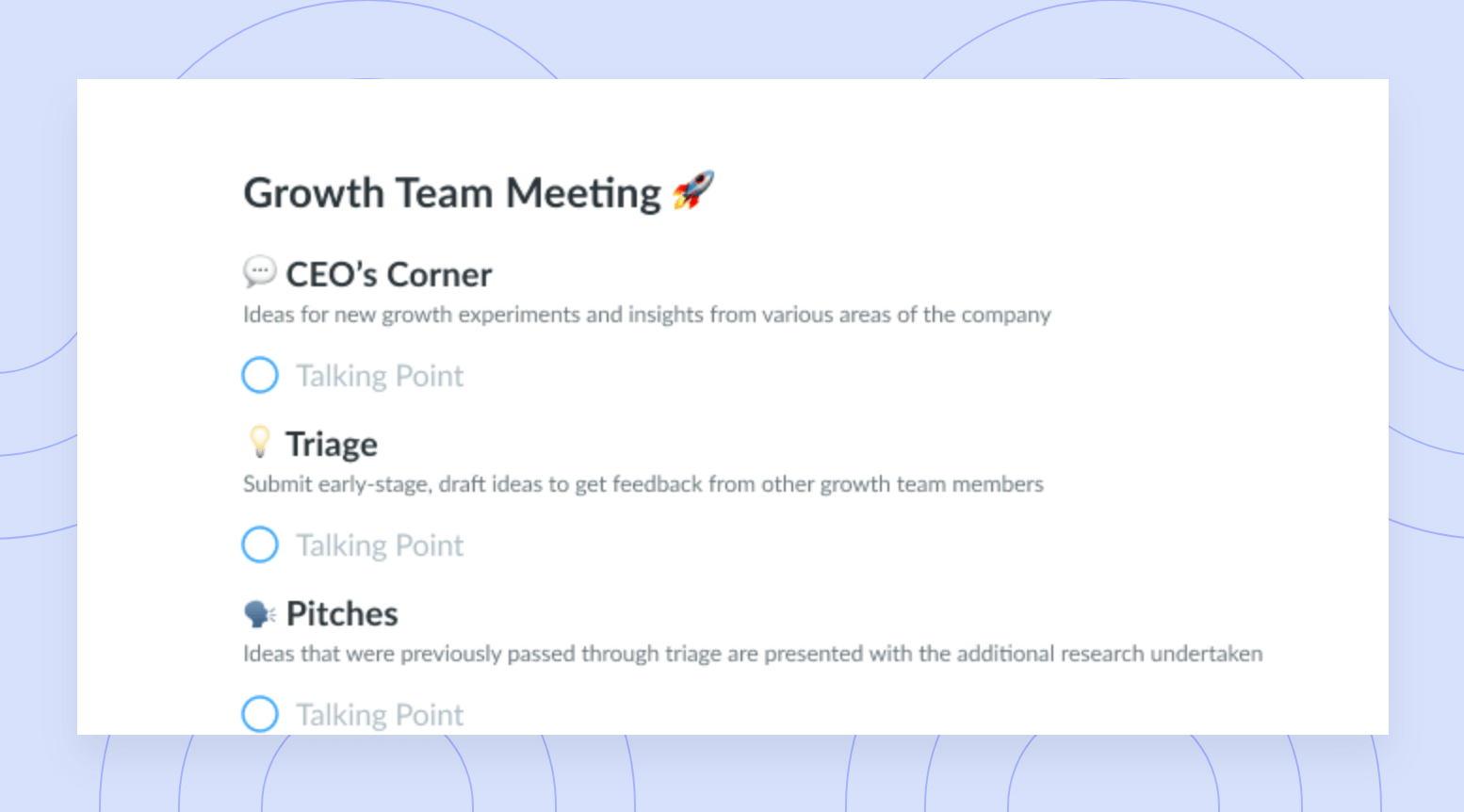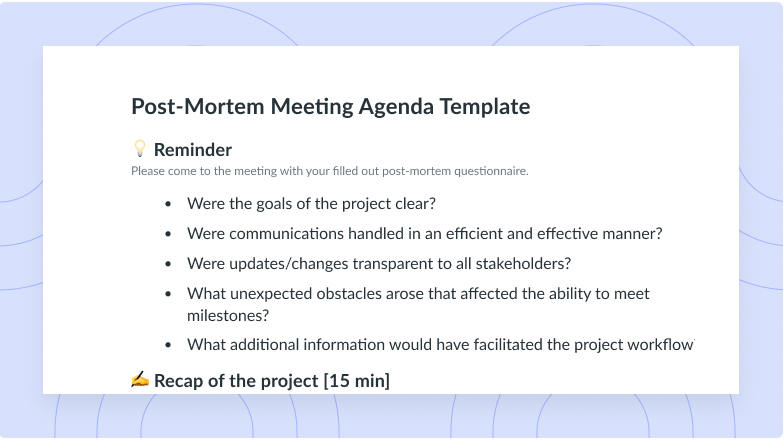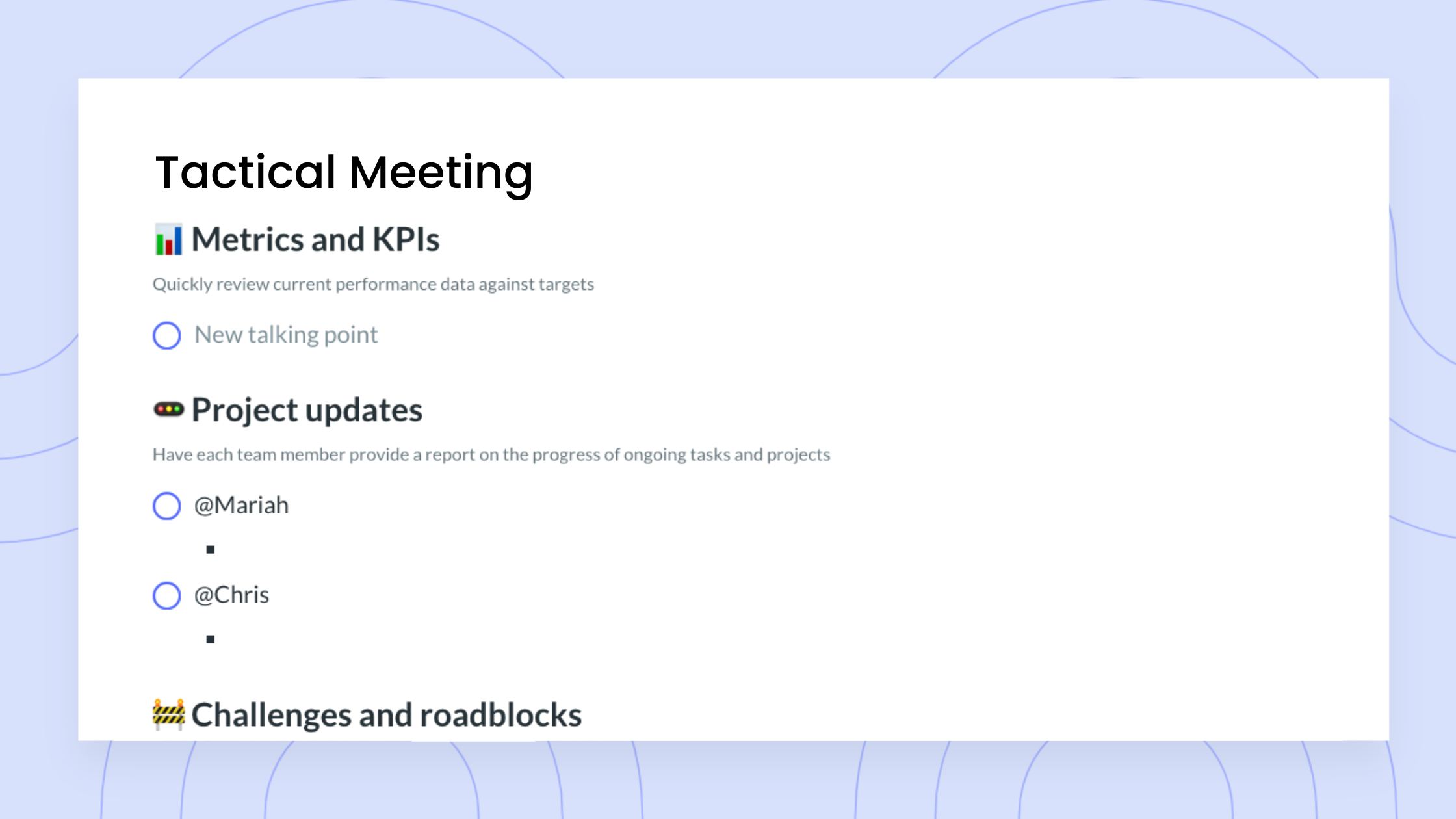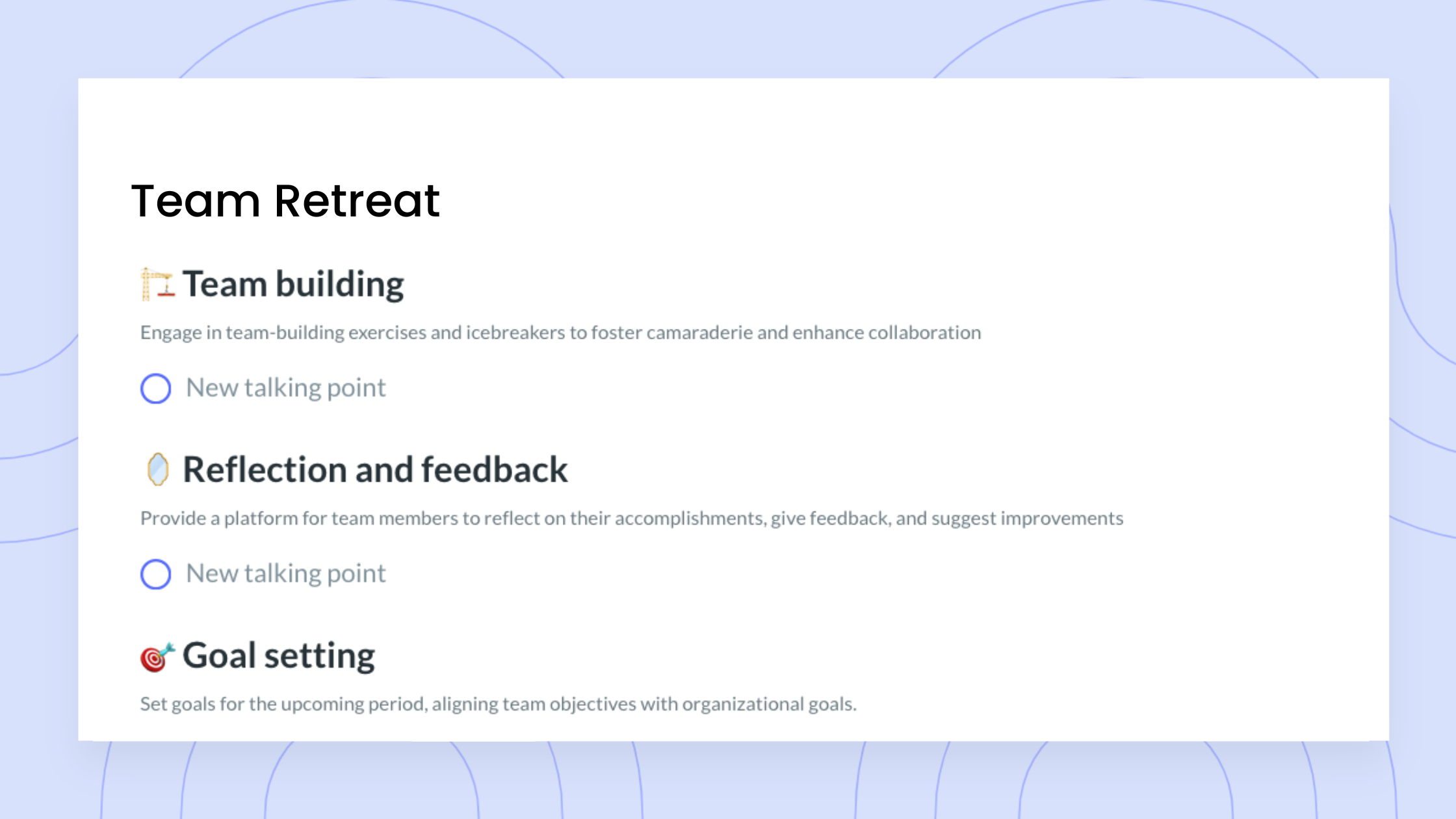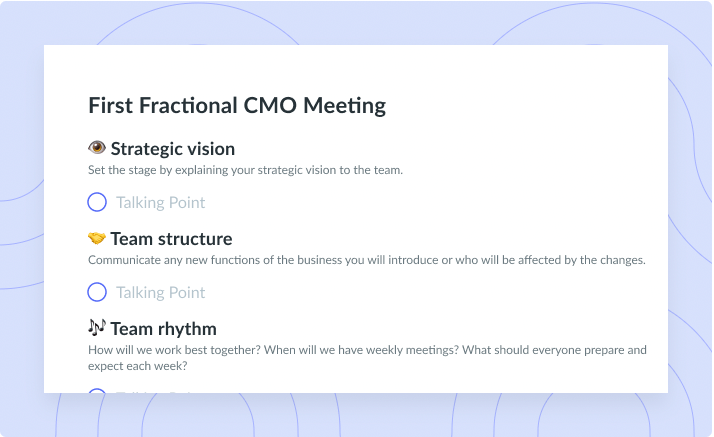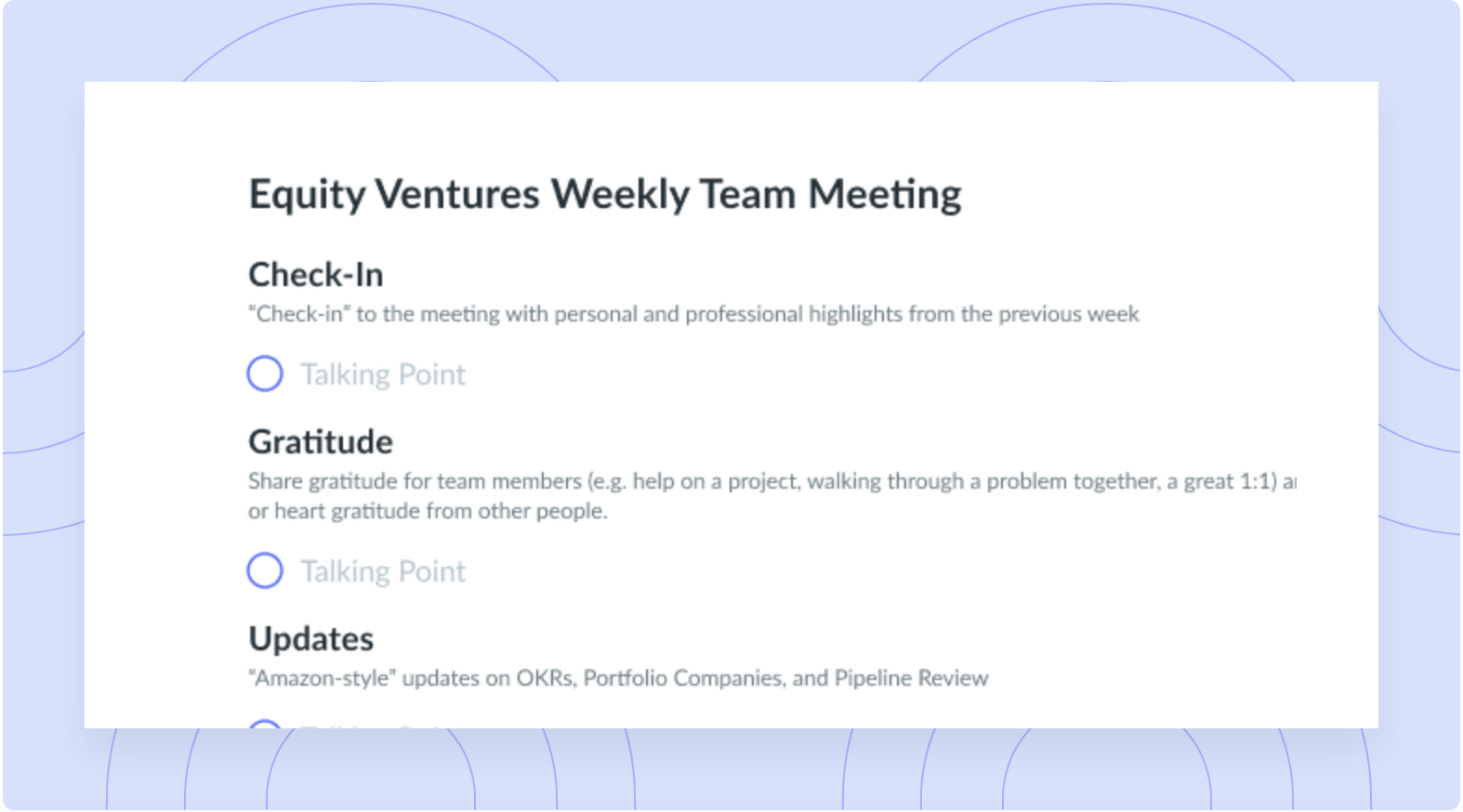Team Structure: 6 Types + Tips to Build One
Learn about different team structures and which one may be best suited to implement with your team to enhance productivity.
There are many different ways of organizing and leading your team. It’s important for you to find a team structure that suits your team well so you can be highly productive, foster strong teamwork, support working relationships, and be successful in achieving the organization’s goals together. If you’re looking to improve your team’s efficiency, establishing or modifying your organizational structure could be impactful.
Each team structure entails a unique chain of command that offers different organizational benefits and creates a positive work environment. Because using a team structure that is well suited for your team can improve your productivity, relationships, and efficiency, this article will cover what a team structure is, why team structures are advantageous, different types of structures, as well as some ways you can build a team structure that is both sustainable and successful.
- What is a team structure?
- The advantages of a team structure
- 6 types of team structures
- 3 ways to build a successful team structure
What is a team structure?
A team structure is a design or framework that defines the relationships between leadership, team responsibilities, activities, and each team member. The team structure that you select will have a large impact on how team members collaborate and make efforts to see continuous improvements for the company. The purpose of creating a team structure is to determine what each individual is responsible for, to whom they may report, and how decisions are made across the organization. There are several ways to go about creating a team structure and supporting a team, with specific methods that are effective for different kinds of groups.

Run delightful team meetings
Increase meeting engagement and productivity with a collaborative agenda that the whole team can contribute to. Try using a tool like Fellow!

The advantages of a team structure
A team structure has a huge impact on the distribution of authority. This means that an organizational structure also affects the way teams collaborate, which in turn affects the overall working relationships that exist within the group. Any team structure defines the relationship and synergy between tasks, leadership and each team member. The advantage of having a team structure is that this structure creates a clearly defined means of working together and accomplishing your goals.
6 types of team structures
- Hierarchical structure
- Circular structure
- Matrix structure
- Functional organizational structure
- Market-based structure
- Process-based structure
1Hierarchical structure
The hierarchical structure is the most common (and perhaps the most stereotypical) team structure, and it happens to be effective for almost any team structure. The hierarchy is organized in a pyramid, where the leaders are placed at the top of the pyramid followed by directors, managers, then employees. In this sense, the hierarchical structure moves from the most senior to the least senior employees of the company. This is a structure which creates clear and strong boundaries, where roles are clearly defined. The hierarchical structure is by far the most utilized structure because of its straightforward nature. This team structure is best for teams that are seeking to engage with a straightforward reporting style, define clear career paths, and provide specialties within individual roles.
2Circular structure
The circular team structure is also hierarchical in nature. High-level individuals in leadership positions reside within the circle, whereas lower-level employees are situated outside of the circle rings. The number of circle rings depends on the team members. While this division still makes this team structure hierarchical, leaders in the circle aren’t necessarily viewed as the top of the company. Rather, the structure moves from the center outward, meaning that leaders are the heart of the firm. The more positions and teams that are present within the company, the more circles that exist. This structure represents a fluid relationship in which all employees are connected, but where there remain differences in contribution based on whether employees are situated inside or outside of the circle. This structure is best for teams that want to streamline communication, create an easy flow of information, and foster fluid relationships.
3Matrix structure
The matrix team structure organizes your team members into a grid, which sets individuals up to report to more than one leader. This structure can improve the decision-making process and also create more of a balance between leadership roles. The matrix team structure may also improve your efficiency as a team because you have multiple business lines focusing on a project and the success of it. The downside to this structure is that when multiple people have to approve something for an individual, it can be time consuming and stump productivity. However, this structure is still extremely effective if all leaders are prepared to be responsive and to accommodate it. This type of team structure is best suited for teams that want improved collaboration and communication, and create a balance in leadership and a balance between units and products.
4Functional organizational structure
The functional organizational structure groups employees with common job functions together. In this sense, this team structure organizes employees by department, by knowledge, and by skills. This type of structure provides a great opportunity for individuals with similar interests and talents to collaborate, boosting the organization’s creativity, innovation, and efficiency. Because these roles are not subjected to changes, this structure allows employees to master particular skills and add value to the company. The functional organizational structure is best for teams that are seeking to produce experts in their field, foster team accountability, and see company growth.
5Market-based structure
The market-based structure divides people by industry, by market, or by customers. This type of organizational structure is therefore suitable for companies that offer services and products to specific market sectors; for organizations that have a deep knowledge and understanding of all the segments, this structure is particularly effective. This team structure enables employees to focus on the demands of a specific industry, and therefore fosters team specialization. This structure works for teams that are seeking a balance between both individual and team work, and is best suited for teams that want to foster the ability to focus on one market at a time and want to highlight individual accomplishments.
6Process-based structure
The process-based structure highlights different internal processes, rather than departments, for example. This is another hierarchical-based structure which places leadership at the top and connects leadership to various organizational processes. In companies where processes are more important than individual projects, the process-based structure is often implemented; this structure would not be effective for an organization with many external-facing projects. The process-based structure is best suited for teams that want to optimize efficiency, need assistance with many different processes, and want to streamline organizational growth.
3 ways to build a successful team structure
1Determine which structure is best for your team
To build a successful team structure, you need to first decide which structure is best for you and your team. Think about which kinds of strategies you need to implement to meet your organizational goals and targets. Do your research, read articles, and speak to leaders in your network to gain an understanding of what has worked for others as well as what has not.
2Align your goals
A key piece in building a successful team structure is ensuring that you align your goals with the actual structure that you select. In other words, you need to ensure that the structure supports and promotes the attainment of your organizational goals. Clearly defining your principal objectives is essential in goal alignment, which is why it’s important to take the time to sit down with your team, clearly outline objectives, and communicate your expectations.
An alignment meeting—where an interactive discussion takes place with the intent to kick off a new project or mission—is the perfect opportunity to set expectations. The goal of the meeting is to ensure team alignment, and the conversation centers around the goals and requirements of the project and helps determine how to complete the project successfully. As such, having this meeting is a great way to align your goals.
3Set clear responsibilities
Setting clear responsibilities is also essential to build a successful team structure. Without clear responsibilities, your team won’t have a clear understanding of their expectations, which means that you can’t develop team accountability. If people are not held accountable, unfortunately, trust cannot be established, which then affects communication. As you can see, there’s a slippery slope created when responsibilities aren’t clearly defined.
To set clear responsibilities, you need to create effective processes. This means that you need to understand which processes separate effective teams from sub-optimal ones so you can improve teamwork, which in turn fosters strong collaboration.
With Fellow, you can set clear responsibilities and stay on top of them all by assigning, tracking, and following up on meeting action items.

Parting advice
Selecting and implementing a team structure can help your team’s productivity and efficiency, meaning you’ll attain your organizational goals with a higher degree of effectiveness. Consider which type of team structure is best suited for your team, for the existing processes within the company, and for the ultimate goals you’d like to attain. After you’ve done your research on team structures, take some time to determine which structure is best for your team, ensure that you align your goals, and set clear responsibilities. We hope that this article has been helpful in outlining different team structures and their application. If you found it to be impactful, be sure to share it with a friend or a colleague!









